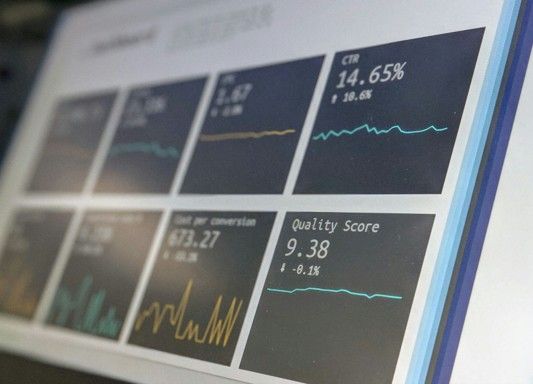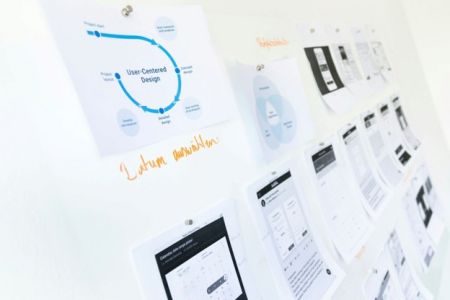
When you think about modern production lines, the first things that come to mind might be robotics, automation, or high-speed interconnected design, all of which feature heavily. However, there’s one critical component that ties these systems together: the human machine interface.
This is the technology that bridges the gap between humans and machines. It’s the thing that allows your operators, technicians, and managers to monitor and optimise production processes as they are occurring.
In other words, it’s vital to understand this interface. In the spirit of championing the evolution of modern production technology, we’ve put together a guide to the human machine interface. We’ll unpack what it is and how it works in the context of a production line.
What is a Human Machine Interface?
At its core, a human machine interface (HMI) is the dashboard or screen that enables a person to interact with machines on the floor. HMIs display vital information, such as a system’s status, and provide inputs that allow the worker to start, stop, or adjust the system's functions.
Think of an HMI as the control panel on a car dashboard. Instead of displaying the vehicle's speed or fuel level, it shows production metrics such as line speed, temperature, or error messages that workers need to address promptly.
Using this interface, operators can respond to alarms, tweak settings to optimise performance, and oversee end-to-end processes from a central point. The level of interconnection in your system depends on how it was designed.
Where previous systems used panels filled with manual buttons and dials, modern HMIs are often touchscreens or computer-based systems. This means they are better and faster, more visual, and can connect with SCADA (Supervisory Control and Data Acquisition) systems, PLCs (Programmable Logic Controllers), or even cloud-based software, allowing workers to remotely monitor systems.
The vital question now is, how does this modernised interface fit into a production line?
How an HMI Fits Into a Production Line
The human machine interface is the grease that keeps any production line moving, metaphorically speaking. Because, inherently, humans are the ones keeping things moving efficiently, and the HMI gives them the tools they need to do this as seamlessly as possible.
Let’s break down the role of a production HMI a bit further:
HMIs allow for real-time control.
A well-designed HMI provides live data on every part of the production line. Operators can monitor temperatures, pressures, cycle times, and output rates in real-time. If a fault occurs, the HMI displays alarms and guides the operator to the source of the issue.
HMIs simplify everything.
One of the key principles in HMI design is user-friendliness. In manufacturing, this means presenting complex information in a clear and intuitive manner. Colour coding, graphical displays, and logical menu structures help reduce operator errors and training time.
HMIs improve safety.
As we all know, production lines can be dangerous. The human machine interface can make things safer by allowing operators to control machinery remotely, reducing the need to enter hazardous zones. Emergency stop functions and clear alarm notifications are also in place to add further layers of information.
HMIs make data work for you.
Many HMIs collect and store data over time, helping you and your team to identify patterns, inefficiencies, and maintenance needs. This data is the bedrock of your continuous improvement, informing everything from minor tweaks to full-blown preventative maintenance strategies.
Adopting an HMI is the key to gaining a competitive edge. It opens the door to higher productivity, better customisation, and simple integration with Industry 4.0. In short, the HMI is your gateway for all machine, robotics, and automation management, and the very best interfaces are programmed specifically for your facility’s needs.
How to Get Your HMI Implementation Right
Before adding a human machine interface to your production line, always consider how best to approach the upgrade. At CNC, we think of this through four dimensions:
- User needs. Who will use the HMI day-to-day? It’s all well and good to program for the experienced engineer, but new operators need to feel just as at ease with the system.
- Environment. A food and beverage factory requires waterproof screens that are easy to hygienically clean, whereas other industries may need HMI panels that can withstand direct sunlightor high temperatures.
- Scale. How will your business grow? The HMI system should be flexible enough to allow future integrations for scale.
- Support. What kind of support, maintenance, or servicing will the HMI require, and how often? It’s always best to partner with the designer or core supplier to access the best support.
This interface is the nerve centre of your production line. Across a variety of verticals, one thing is clear: understanding and leveraging modern human machine interface solutions is the way forward. It creates an efficient, safe, future-ready floor.
If you’re exploring how to upgrade your production line with an HMI system, now is the time. Find your edge with the right team for the job.
We build cutting-edge, turnkey automation solutions.
CNC Design has over 33 years of leading New Zealand in cutting-edge industrial automation. From food and beverage companies to manufacturing floors, we are your full-service provider for design, commissioning, programming, installation, and servicing.
Reach out to join the leading New Zealand's Industrial Automation Solution providers.







